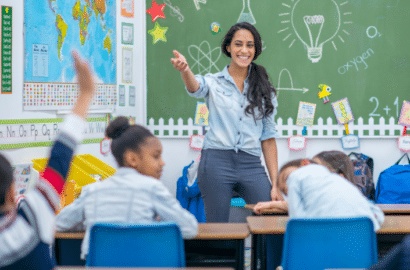
One of the biggest conversations in K-12 education right now is around ChatGPT. The artificial intelligence (AI) chatbot has been making headlines for months as administrators, teachers, parents, and students navigate this new tech.
At first glance, it might seem like a threat to academia. With advanced language processing skills, ChatGPT can answer prompts or write an essay in a matter of seconds — while arguably taking away a valuable learning experience for the student. On the contrary, there’s a growing number of educators who are excited about this new technology and the opportunities it creates for both students and teachers.
Opportunity for Education Reform
Education reform has been a hot topic for years. Some technology leaders are viewing AI as the catalyst for this much-needed change.
“We thought COVID would be the disruptor, but schools quickly returned to pre-pandemic status,” says Mary-Lou O’Brien, Director of Digital Innovation at Redlands School in Sydney, Australia. “I’m pinning hope on AI to explore how this innovation can save time and effort by automating some mundane tasks in the classroom.”
Similarly, Tye Campbell, Director of Strategic Information and Innovation at Gilman School (Baltimore, MD), is hopeful about the potential for reform.
We all came out of the pandemic hoping we weren’t going back to the way things were before. ChatGPT has reinvigorated my hope, and maybe others, that we’re going to change things and shift things around in education and in our classes, and maybe regain some of the hope that we came out of the pandemic really excited about.
Compared to social media platforms like BeReal and TikTok that might have a shorter lifespan, tech leaders are viewing AI tools like ChatGPT as a long-term disruptor. Mary-Lou refers to it as a tide — not a wave — saying, “The tide is slower but will have greater impact.” Schools should start embracing and adapting to this new tech accordingly.
Improve Equity and Accessibility to Educational Tools
AI tools also create a unique — and much needed — opportunity for equitable access to advanced learning tools. In the past, such tools were reserved for students from high-income families with access to resources like tutoring and the internet.
Vinnie Vrotny, Director of Technology at The Kinkaid School (Houston, TX), is passionate about the opportunity for positive impact. “ChatGPT is providing equity for everyone to access tools that were previously only available to a select few… it’s allowing students to be on the same footing as their peers.”
This is both a present and future concern. In the world of independent schools, there is a unique expectation of doing things differently to prepare students for the future. Schools that block students’ access to ChatGPT are preventing them from learning how to use a valuable new tool and skillset, whereas schools that empower their students to use AI are only setting them up for success in the modern world.
“Those schools that are blocking [ChatGPT] are widening the [equity] gap,” says Mary-Lou. “It’s creating this divide between students that will be so ready for university, used to self-directed learning, and their experience managing and having access to modern tools and devices.”
Prioritize Deeper Teaching and Learning
Perhaps the biggest opportunity with ChatGPT and other AI tools is to reimagine the art of education itself. Traditional teaching and learning methods often ask students to answer prompt questions and conduct surface-level research. With ChatGPT, students can complete these assignments in a matter of seconds with little to no effort. Instead of blocking the tool and fearing plagiarism, tech leaders see a major opportunity to use ChatGPT to focus on deeper teaching and learning.
“While we have a lot to do as educators to make sure our students don’t think [plagiarism] is okay, I’m far more interested in having our teachers and educators understand how to change the way they assess their students to ensure that can’t happen,” says Tye. “Are there ways we can assess students that don’t involve simple prompts and require a recognition of deeper learning to make sure students truly understand?”
With this new perspective, the emphasis is on reflective thought and understanding rather than cramming for a quiz. One such example comes from a medical exam at the University of Sydney. Participants were instructed to ask ChatGPT a prompt question, evaluate the response, and then reflect on the chatbot’s response in their exam answer. This process empowered the students to harness the AI’s knowledge while still proving they understood the subject material and could discuss it in their own words.
As with any new technology, there are valid concerns and perspectives on both sides. To learn more about the good, the bad, and the opportunities with ChatGPT for K-12 schools, watch our on-demand webinar to hear Vinnie, Tye, and Mary-Lou share their experiences (and excitement).



